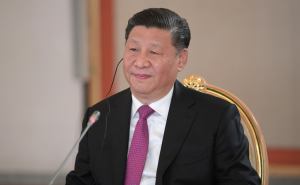What’s the state of the U.S. political debate on China? In a recent short article at Lawfare, Mapping the China Debate, Ganesh Sitaraman, a professor of law and director of the program on law and government at Vanderbilt Law School, sketches out a map for thinking about where Americans fall in terms of their reaction to the increasing importance of China. Sitaraman breaks the map into ten broad regions, four on the dovish side and six on the hawkish.
The “neoliberal dove” faction is broadly uninterested in doing anything whatsoever to change either China’s internal or external policies, and is satisfied simply to continue doing business with China, taking advantage of its large consumer and labor markets to reliably bring home profits. “Leverage doves” want to maximize interdependence as a way of binding China, both internally and externally. “Transnational doves” emphasize the need to engage with Beijing in order to tackle global problems such as climate change, while “anti-war doves” seek to reduce tensions and minimize the chances of military conflict.
On the other side, “liberal hawks” resent and want to resist China’s anti-democratic efforts at home and abroad. “Nationalist hawks” focus on the cultural (and implicitly the racial) threat posed by China. “Traditional hawks” fixate on the need for military superiority over a growing China, while “corporatist hawks” worry about the commercial threat of China’s gigantic economy. Finally, “resilience hawks” talk about the need to reform American society to face China’s growing cultural and economic power.
During the Cold War, views on the Soviet Union mapped broadly onto a right-left divide, with a few important exceptions. This does not hold with regard to contemporary views on China, which are all over the ideological map. On one pole of the left, for example, a small “tankie” community (thus named in honor of Cold War communists who continued to support the Soviet Union after it crushed the Hungarian government in 1956) regularly excuses Chinese repression in Hong Kong, Tibet, and Xinjiang, portraying popular resistance as a product of Western media misinformation and CIA agitation. This group would fit most comfortably into “anti-war doves.” On the other hand, some “populist” leftists advocate taking a hard line on China, suggesting that the Chinese ruling class has been a full partner in the global development of “neoliberal” capitalism. Labor unions in the United States also continue to resent China’s entry into the World Trade Organization, a move widely believed to have undercut American working class manufacturing. Both of these would likely fall under the “resilience hawk” label.
On the right the divides are equally poisonous. Much of the commercial community, notwithstanding the threat of intellectual property theft and of competition from Chinese business, remains committed to engagement with China (neoliberal doves). Other elements (often depending on sector) could be classified as “corporatist hawks.” Populist conservatives fall into both the “anti-war dove” and “nationalist hawk” groups, while the DC foreign policy “blob” runs the gamut from leverage dove to leverage hawk to traditional hawk.
Unfortunately, we lack good data on the attitudes of Chinese-Americans (of both mainland and Taiwanese extraction) on the PRC. It seems unlikely, however, that they would form a cohesive domestic lobbying group on behalf of better relations with Beijing, given both the diversity of origin and the wide span of years of Chinese emigration to the United States.
The bad news for China is this; it has relatively few friends in the United States. The friends it has (generally those in the trans-Pacific commerce business and to some extent in higher education) do have some power, but that power has come under assault from both right and left in recent years. Americans are acutely aware of China’s repressive activities in Xinjiang, Tibet, and Hong Kong, and while there is little appetite for intervention there also isn’t much toleration. By and large, they view China as both an economic and a military threat; some view it as a cultural and racial threat, as well. Rarely has such a consensus so rapidly developed on American foreign policy, and it bodes ill for the future of the trans-Pacific relationship.
































